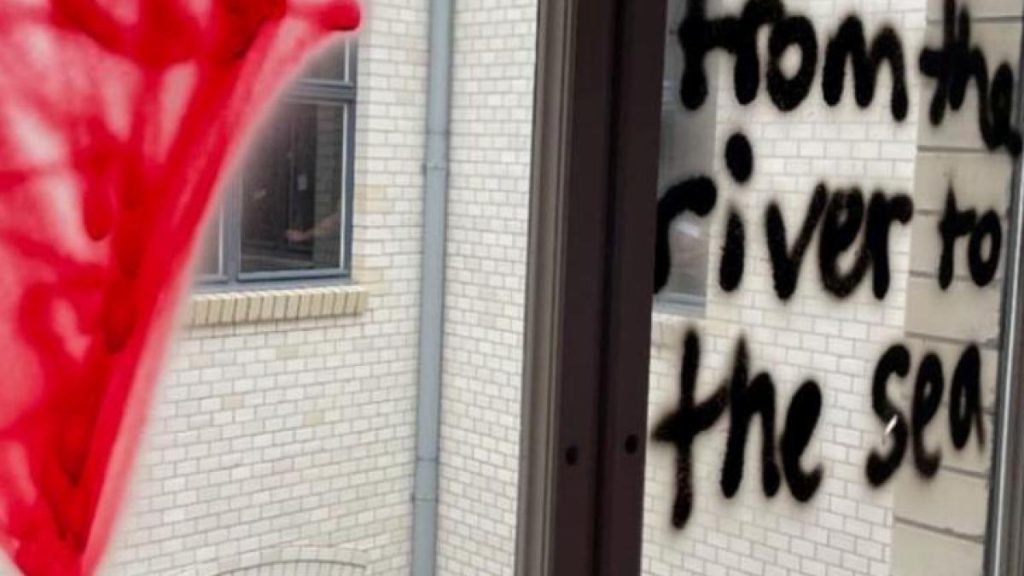The Humboldt University in Berlin has issued a ban on employees taking photos of graffiti in the temporarily occupied Institute for Social Sciences by anti-Israel activists. The directive, signed by institute directors Anette Fasang and Christian Volk, was reportedly sent on instructions from university management. The graffiti found inside the building includes messages supporting the Hamas terrorist organization and references to violent attacks against Jews in Israel. The institute is currently closed for renovations, with employees allowed to enter next week to assess any damage to their offices.
In addition to the ban on photographing graffiti, the university also issued a trigger warning to warn individuals of potentially upsetting content. Social science scholars such as Steffen Mau and Andreas Reckwitz were informed that a plan to address the events at the institute would be developed. The occupation of the institute by anti-Israel activists led to tense situations for institute members, with some feeling threatened by the behavior of the occupiers. Despite initial agreements for a dialogue between the university and the occupiers, a portion of the occupiers refused to leave the building voluntarily, prompting a police intervention to end the occupation.
During the police operation to remove the occupiers from the institute, approximately 20 individuals barricaded themselves on the upper floor. A total of around 120 people were involved in the occupation, with over 500 police officers involved in the operation. Several individuals were temporarily detained for identification purposes, and criminal charges including breach of the peace, resistance to law enforcement, and incitement to hatred were filed. The university described the damages as significant and stated that it would not press charges against students who left the building voluntarily after the dialogue.
Following the removal of the occupiers, the university announced that it had begun assessing the damages at the Institute for Social Sciences. The extent of the damages was significant, leading to criminal charges being filed for the use of symbols associated with a banned organization, like Hamas. The university clarified that charges for trespassing would not be pursued against students who left voluntarily but would be filed against the remaining occupiers. There was praise for the university’s handling of the situation, emphasizing a balance between de-escalation, dialogue, and ultimately taking necessary action against those who engaged in violent behavior during the occupation.
The decision to end the occupation was made collectively by university leadership, including input from the Mayor of Berlin and the President of the Humboldt University. The university clarified that it does not tolerate hate speech or violence in its premises and emphasized the importance of maintaining a safe environment for all. Despite some criticism, particularly from CDU-affiliated student groups, for the handling of the occupation, the university stood by its decision to ensure the safety and security of its campus community. The events of the occupation have sparked discussions about the need for dialogue and understanding among different groups within the university community.


